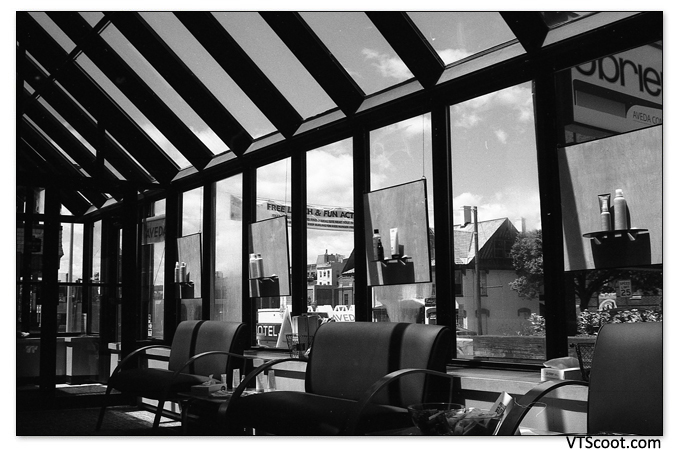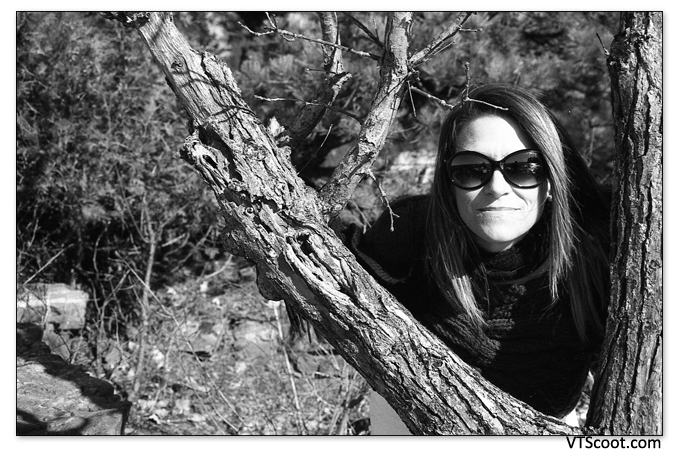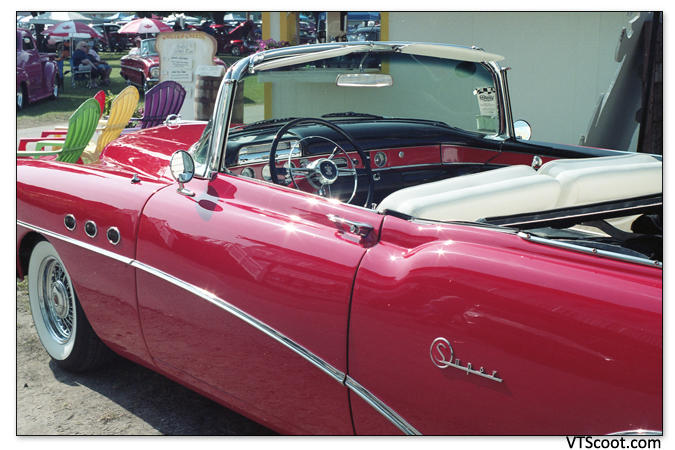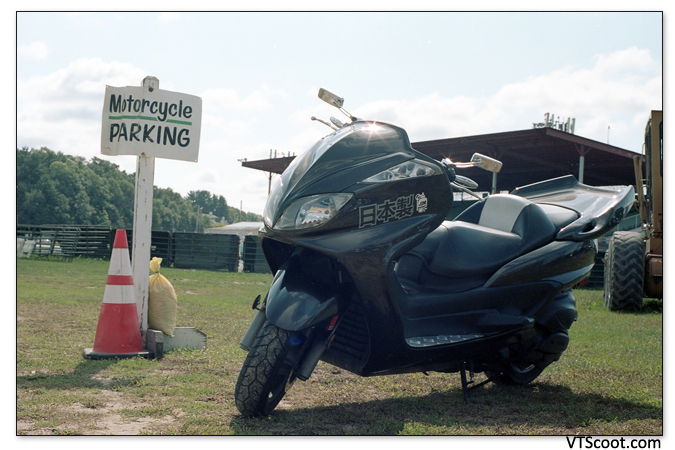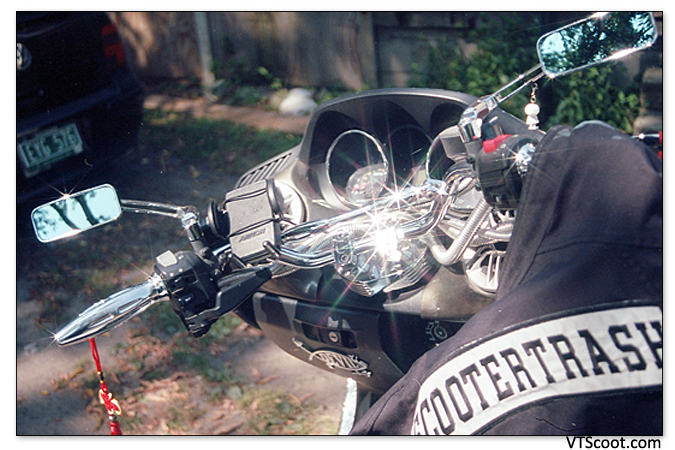Canon AE-1 Program
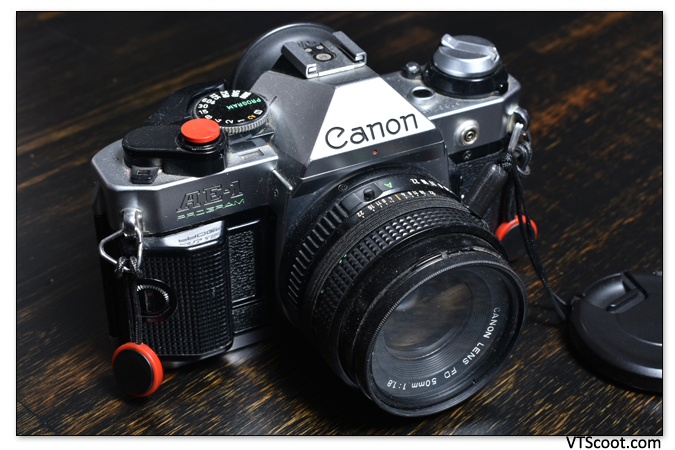
This is another one of those cameras billed as an ideal starter camera for photo novices. This was my third camera acquired after getting back into film photography, behind the Pentax Spotmatic and the Pentax K1000. I decided this was going to be my last camera purchase (I mean who needs more? –shakes head– Such a fool was I), and I went all-in. I picked up three lenses to fit it, an automatic winder, a flash, a Canon-branded strap and Canon-branded gear back to haul all this stuff in. Not to mention a whole mess of used filters to fit all these lenses.
Long story short, don’t do that.
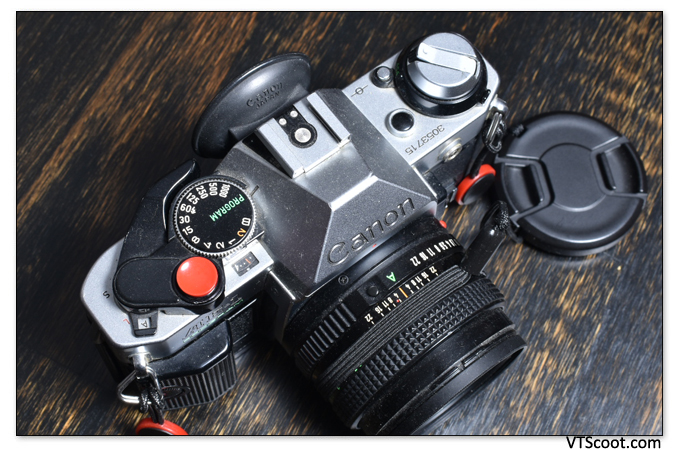
Now, years later, I have a collection of two dozen film cameras and I no longer completely outfit them with all the extra gear. My K1000 also got the over-outfitting treatment when I first got it, though not nearly as much as this Canon. I don’t usually grab this camera for outings anymore, the lenses are on a shelf with all my other lenses, the gear bag is behind the couch filled with odds and ends that I don’t actually carry with me, and all the filters, umm, I actually don’t remember where I put them all. I should find those, a few of them were super 70’s’riffic retro-cool.
I’ve acquired four of these cameras. One I kept, one I gave to my sister, and the other two had “the squeal.” What’s that? “The Squeal?” It’s the main problem with this camera model, and it’s really common, but it’s not too difficult to fix. The problem is with some of the moving parts inside losing lubrication over time and, when the shutter is depressed, it makes a squeal noise from the resulting friction. This friction can affect the shutter speed, slowing it down a little or a lot. If you find one with the shutter squeal I’d recommend you pass on it and find another one, unless you think you can fix it yourself. the AE-1 cameras are plentiful, and can be acquired for the price it would cost you to have the squealy one repaired.
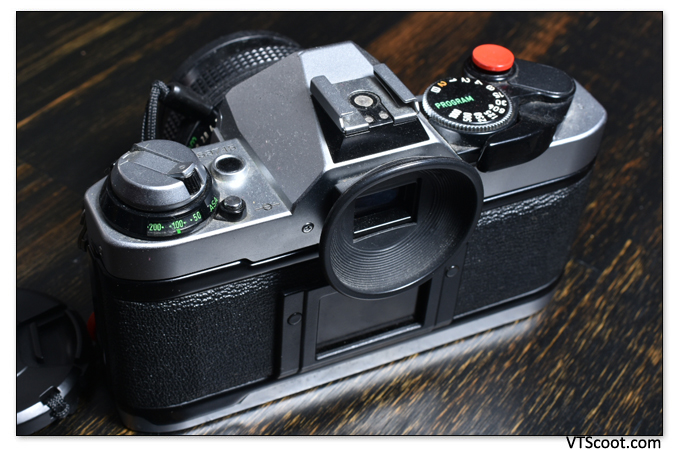
The AE-1 is a battery-powered microprocessor-controlled (the first of its kind) fully-manual camera designed for the consumer market. The AE-1 Program (or AE-1P) is the same camera with a few improvements, most notable being the ability to shoot in “Program” mode, which eliminates the need to manually set the shutter speed or the aperture. Both work in shutter speed-priority mode, and neither work in aperture-priority… which is a shame, because that’s my method of choice but, you know, first-world problems. Wah.
It’s a pretty sturdy camera, I don’t know if it is the same level of bulletproof’edness as the K1000, but then I don’t know how bulletproof -that- one is, having never fired bullets at it. Don’t do that, by the way. Don’t shoot your camera. I’m sure this guy has banged around in my camera bag, here and there on the road, and it lived to tell the tale. It has a satisfying heft to it. Not enough to make it feel unwieldy of course, as it’s only 1.6 pounds with a 50mm lens, but with the attached battery cover grip it feels easy to hold and steady.
Holding this thing now I’m wondering “Why don’t I use this more often? I always liked this camera.” Probably due to the ever-growing mass of photo machinery I accumulate and my favorite go-to cameras. Some of these cameras I have yet to run more than a roll or two through, while my AE-1P has probably knocked-out two or three dozen rolls during the time I’ve used it. It’s a good machine.

